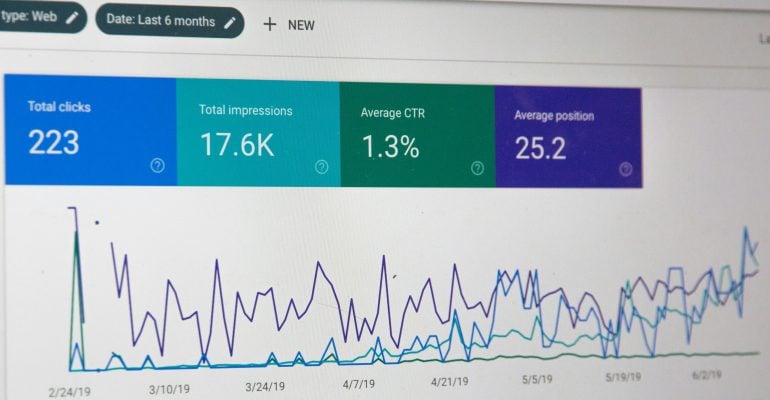SEO, or search engine optimization, is one of the most complicated and misunderstood elements of digital marketing.
If you want to drive more traffic to your website, you need to do everything you can to optimize the site for Google and other search engines.
In this article, we’ll explain one of the most straightforward and effective ways to improve your site’s visibility: creating transcriptions from audio and video content.
Transcribing YouTube videos, podcasts, explainer videos, and other content into text will help you hit more keywords and appear in more search results.
What Is SEO?
In short, SEO (search engine optimization) is the process of improving your website’s visibility (from a search engine point of view) to generate more traffic from search results.
While other search engines like Bing and Yahoo continue to receive significant traffic, about 80% of all search volume comes from Google.
With that in mind, SEO is all about optimizing your website to fit Google’s algorithm.
Here are a few of the key factors that play into Google search rankings:
Content and Relevance
High-quality content is one of the most important metrics Google looks at when determining how to rank a website.
If the content on your website is engaging, highly relevant to your offering, AND contains keywords that actual people use when searching, it would be a strong signal to Google’s crawlers on how to rank your site.
You can use keyword tools like Semrush, Ahrefs, and Google Search Console to understand user behavior and identify common search keywords.
Site Performance and Structure
Search engines like Google look for a site structure their crawlers can easily read, and for each page to load quickly so the user experience is positive. A website that is too slow to load, contains distracting ads or has other issues with usability will likely not rank high in search results.
Backlinks
Backlinks are links to your site from another site.
Google will view your website more favorably if it has links from other popular, authoritative websites.
Of course, this is only the tip of the SEO iceberg. Improving a site’s search visibility is a complicated process that takes time. You can’t simply make a few changes and expect your ranking to improve overnight.
How Transcriptions Help with SEO
When marketers think of SEO, they usually focus on things like keyword research, backlink profiles, and site performance.
While these are obviously important, it’s easy to underestimate the impact of transcriptions.
Accessibility
The most obvious benefit of transcribing video and audio is that it makes this content available to a wider audience.
Without a transcript available, users may not be able to view your content if they’re hard of hearing or if they’re situated where they can’t turn on the sound.
User Experience
Some people may simply prefer to skim your transcript through the relevant section rather than having to skip through a video.
Your goal should be to cater to as many different users as possible.
In general, limiting your potential audience is a surefire way to hurt your search engine performance.
Voice Search
Posting a transcript also makes it easier for Google to parse your content.
With more and more people using voice search, creating transcripts of spoken content will help you match more search queries.
Internal Linking
Finally, you can add links to the text transcription just like you would overlay them on a video (except Google can’t read links embedded in video content).
This will help you direct readers to other content that may be relevant to their interests or questions.
Overall, transcribing audio and video content gives you more ways to connect with users and can make a substantial contribution to your SEO performance.
Transcription Tips
Now that you understand the benefits of transcription, the next step is working out a process for transcribing content.
Start by Catching Up
First, you’ll need to create new transcriptions for all existing content.
Once that’s done, you can start developing transcriptions alongside new content as you create it.
Consider this one of the steps in the content creation process — just like writing a script, recording video, and editing audio.
How to Transcribe Video and Audio Content
There are many different methods of transcribing video and audio content, including:
- Manually typing out transcriptions yourself
- Google Docs voice typing
- AI-based transcription, like our own, super accurate and speedy AI Transcription Tool
- Human transcription services, Like Rev, GoTranscript, HappyScribe, and others.
Naturally, each one of these comes with its own pros and cons.
For example, typing your own transcriptions is the most time-consuming option, but it also gives you the most control over accuracy.
On the other hand, most AI tools are relatively affordable and can get the job done quickly, but you’ll need to review the transcript yourself (or hire a copy editor) before publishing.
The best choice for your workflow depends on several factors including your budget, time constraints, and accuracy requirements.
We covered common transcription methods in more detail in an earlier blog post.
Edit the Transcript and Add Keywords
When you hear the word “transcription,” you probably think of a text that exactly matches the audio or video.
Court transcripts, for example, require a high degree of accuracy to serve as accurate public records.
When it comes to typical online content, however, you don’t necessarily need your transcription to read exactly like the video.
Let’s say you’re transcribing a YouTube video for publishing on your blog.
If you start with a direct transcript of the audio, you may still want to make additional edits and revisions.
Even simple changes will make the text look more professional — for example, removing filler words such as “um” or “like.”
From there, you can add keywords and phrases when they make sense in context.
It’s important to avoid “keyword stuffing” (adding keywords in awkward/irrelevant places), but you should have at least a few mentions of the main keywords in each transcript.
You may also consider adding screenshots from the video itself to break up text and make the content easier to understand.
Overall, it’s important to consider the medium when creating new types of content (or new versions of existing content).
Final Words
No matter what kind of content you’re creating, chances are that someone else is vying for the same audience.
If you want to increase traffic and visibility, you need to take a proactive approach to SEO and leverage every opportunity to increase your ranking.
Transcribing audio and video content into text is one of the most cost- and time-efficient ways to improve your SEO and organic search results.
Did you like this article? Have any feedback or questions? Let us know in the comments.





0 Comments